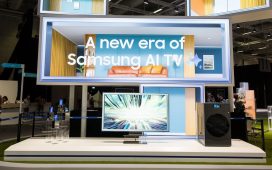If you want a phone packed with the latest technology and tons of customization, you’ll inevitably look towards one of the best Android phones, such as our pick for best overall, the Samsung Galaxy S23 Ultra. Android phones have a well-deserved reputation for being more innovative and flexible than the Apple iPhone, and they’re often more affordably priced as well.
Why consider an Android phone over an iPhone? “Android and iOS have grown more similar over the years, but one advantage Android continues to hold over the iPhone is the level of choice and diversity it offers,” notes JR Raphael, founder and publisher of Android Intelligence. Even though Apple’s current iPhone 14 Series has three models, “the iPhone is essentially a single approach, under one company’s close control. Android is an entire platform, with lots of different companies competing and bringing their own unique visions into the mix. You can decide which type of device and experience is right for you.”
Raphael continues: “With the iPhone, if you like what Apple has at any given moment, that’s great. But if you aren’t entirely thrilled with Apple’s hardware choices or the software decisions, you’re pretty much out of luck. On Android, you’ve always got a massive menu of options.”
The 5G Android phones on our list are all priced as unlocked phones for use on any carrier (confirm compatibility with your service before buying). Many of these phones have an additional discount at the time of purchase, if you are activating a new phone plan. Typically, manufacturers and retailers sell these phones directly. Many carriers also sell these phones with a service plan, but the pricing is carrier dependent.
After research and experience, we’ve chosen the best Android phones you can buy today. Whether you’re looking for a phone that matches well to your personal and professional life, or a phone that won’t break your budget, there’s something here for you.
How We Chose The Best Android Smartphones
We combined research with hands-on testing and experience, and we spoke with product experts and industry leaders to help us determine the products that make the cut. We carefully evaluated each smartphone’s display, processor, camera setup and more. We also paid attention to what sets each Android smartphone apart from its competition.
Why Trust Forbes Vetted
The Forbes Vetted tech team strives to offer accurate, trustworthy product assessments that are the result of intensive research and hands-on testing. Our writers and editors have years of experience writing about a broad range of consumer electronics and have the background and expertise to help you make the best buying decisions possible.
Other Articles You Might Like
Forbes Vetted regularly covers all types of consumer electronics and then reviews and recommends the best products in specific categories. Here are some other articles you might enjoy reading:
Follow me on Twitter or LinkedIn. Send me a secure tip.
Sign up for the Forbes Shopping newsletter
for the best fashion, home, wellness and tech product advice.










